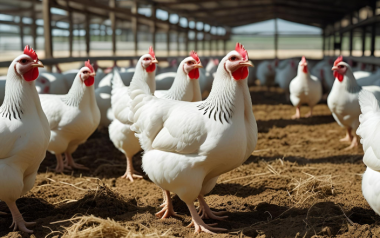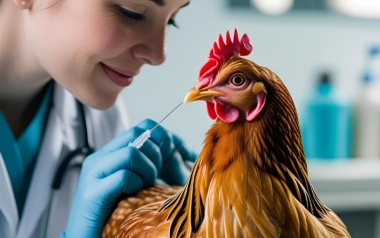Sources: Available upon request.
07 Feb 2024
Osteoporosis in laying hens
Osteoporosis, also called layer fatigue, is a common degenerative metabolic bone disease in caged laying hens.
Available in other languages:
Content available at:
العربية (Arabic)
The University of Granada, in Spain, is participating in a research project that analyzes the development of a type of severe osteoporosis that affects egg-laying hens, since the formation of the eggshell is a very costly process for the organism of these animals.
Laying hens need to mobilize two grams of calcium to form the eggshell, which is equivalent to ten percent of the total calcium in their skeleton that must be replenished daily. This causes them to develop a severe form of osteoporosis, with a high incidence of bone fractures. Osteoporosis, also called layer fatigue, is a common degenerative metabolic bone disease in caged laying hens.
Calcium is an essential mineral that is absorbed from feed to maintain bone hemostasis and ensure normal cell function. In laying hens, it not only plays an important role in supporting bone remodeling, a lifelong process that balances the activities between osteoblasts and osteoclasts but is also a critical component in eggshell calcification. Eggshell calcium comes primarily from the diet through intestinal absorption, but approximately 25% to 40% of the calcium comes from bone through reabsorption, particularly during periods when hens temporarily stop eating.
Previous studies have reported that approximately 30% of caged hens have bone fractures at least once during their lifetime.
Characteristics of the disease and its effects on egg production and health include:
- Reduced egg production and shell quality
- Increased bone loss
- Degradation of bone microstructure
- Bone fragility and fracture rates
- Osteoporosis leading to paralysis and even death
Currently, most commercial laying hens worldwide are housed in conventional cages, such as in China, the United States, India, Japan, Mexico, Brazil, Russia, and Turkey.
Skeletal problems will be further challenged by extending the egg production period of “long-life” caged layers, since the longer the egg production, the more calcium is needed for egg shell formation, therefore, the worse the bone quality.
Although eggs are one of the most complete foods of animal origin in the human diet, with a very rich supply of nutrients and vitamins, the bone problems of laying hens represent an important animal welfare dilemma with “serious ethical implications for the egg industry”.
In this sense, the University of Granada research aims to reduce the incidence of skeletal problems, such as fractures or deformities, in laying hens through genetic selection. In addition, the knowledge acquired in this study can also be applied to the reduction of bone pathologies in humans.









































